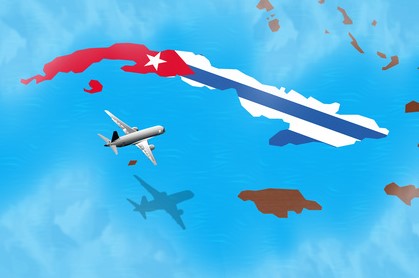
Learning a new language or expanding your existing knowledge doesn't necessarily mean hard work, learning vocabulary and boredom. Combine learning Spanish with an exciting language trip to the Caribbean.
Cuba - when the largest island in the Caribbean is mentioned, we immediately think of cigars, vintage cars, Caribbean beaches and rum... A romantic destination for a language study trip with a touch of adventure in the air.
After the country suffered a severe economic crisis in the 1990s, the Cuban government concluded new trade agreements and also backed a new horse in 1992: tourism. With success! Since then, the Cuban economy has been repeatedly threatened by both the global economic crisis at the beginning of the new millennium and hurricanes. Nevertheless, Cuba is and remains an attractive, exotic and very popular destination for beach vacations and language stays in the Caribbean.
Cuba has changed in various ways and continues to do so, but to this day visitors to the country feel like they are traveling back in time. Vintage cars wind through dusty streets lined with picturesque colorful buildings. Cigars are rolled by hand and lush sugar cane fields promise a flourishing rum production. The country is surrounded by miles of white sandy beaches and the night air is permeated by the sounds of salsa. If you want to learn Spanish during a language study trip, you should definitely consider Cuba as a destination. A language study trip to Cuba is sure to be an unforgettable adventure!
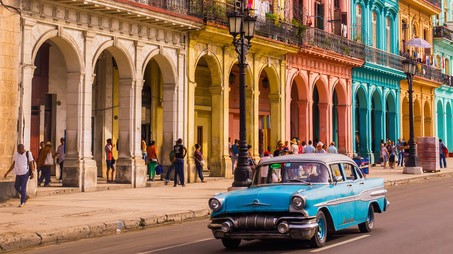
Cuba can be roughly divided into three areas. The western part of Cuba is preferred by nature lovers; national parks, extensive nature reserves and the variety of unique plants and animals delight nature-loving visitors who venture into this part of the country. Those who book a language study trip to the north of Cuba will love the landscape of this part of the country. The west of Cuba is a paradise for bikers and hikers, while snorkelers and divers are delighted by the magnificent underwater world. The western region is not very densely populated, with small villages offering simple accommodation for tourists. A trip to this part of Cuba is recommended so that the Spanish language skills acquired during the language study trip in Cuba can be deepened through contact with the locals. The west is also known for the world's best tobacco and the famous Cuban cigars, which are shipped to all corners of the globe. Inland, Vinales is a popular destination for tourists who want to see the impressive limestone cliffs in the Vinales Valley. Paradise beach vacations are offered in Cayos de San Felipe - a small group of islands in the north of Cuba. There are no language schools here in the far west of Cuba, but if you are planning a longer language study trip to Cuba, you should definitely plan an extended excursion to this part of the country.
The central part of Cuba is home to beautiful and picturesque cities. The best-known destination for a language study trip in Cuba is the charismatic capital Havana with its winding streets, imposing colonial buildings and the old town, which is a UNESCO World Heritage Site. Trinidad, with its numerous well-preserved colonial mansions, Santa Clara and Cienfuegos are also well-known and popular destinations for a language study trip in Cuba. Vibrant life, cheerfulness and rhythm determine the daily routine in these impressive cities. Anyone traveling to Cuba must have visited these places - because this is where you will encounter the history of the country and authentic Cuba. The central part of the country is also surrounded by paradisiacal beaches. The most famous seaside resort is Varadero; the kilometer-long stretch of coastline with white sand and palm trees is considered the most beautiful in the whole of Cuba. Anyone on a language study trip to Havana or another town in the central part of Cuba will certainly want to relax here from time to time.
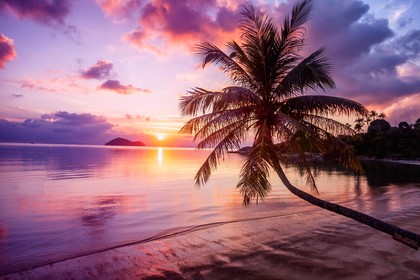
The eastern part of Cuba is a completely different experience for travelers; tropical rainforest, clear freshwater rivers and an incredible variety of unique plants and animal species make the Alejandro de Humboldt National Park a breathtaking part of Cuba. Numerous outdoor activities also inspire travelers in this area during a language study trip. On the coast in the far south lies the historically important city of Santiago de Cuba, the former capital of Cuba.
The diversity of the cities and the varied natural landscape of Cuba make the country an attractive destination for language courses. If you want to learn Spanish here, you should definitely plan a trip through this Caribbean island after your Spanish course.
Various airlines fly daily from Europe to the largest island in the Caribbean. The best-known destinations are Havana and Varadero. Many flight routes include a transit or stopover, which often takes place in the USA, e.g. in Miami. Havana is served by various (transatlantic or Caribbean) shipping companies. It is therefore perfectly possible to enter Cuba by ship. However, anyone planning a language study trip to Cuba is unlikely to consider this entry option, especially as crossing the Atlantic by ship takes a few extra days of travel.
Cuba's subtropical climate and proximity to the equator are the reasons for its very even temperatures all year round. The average temperature is around 27°C - so you can plan beach days in Cuba all year round. The warmest months are between May and September; between November and April, cold temperatures below 10°C can be expected at night. This is particularly true for the area around Havana. Temperatures are slightly higher in the south of the island than in the north. There is no specific rainy season in Cuba. Isolated heavy showers are possible throughout the year. Language travel to Cuba can therefore be booked all year round.
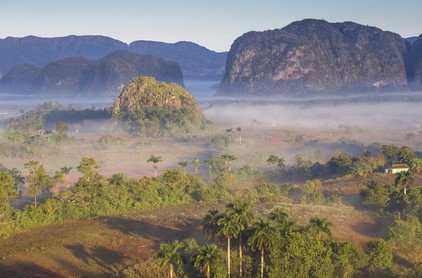
The range of language schools in Cuba is small but excellent. The schools are located in three cities. So if you want to learn Spanish in Cuba, you can choose between the following three towns:
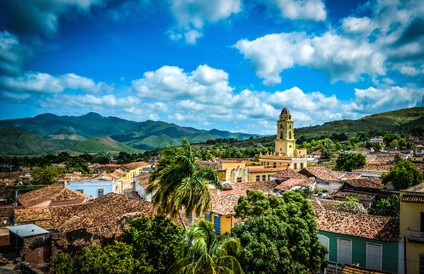
Spanish courses can also be booked during a guided tour of the whole country.
Swiss citizens do not need a visa to enter Cuba for a stay of less than 30 days. If you are planning a longer stay in Cuba, you should contact the Cuban embassy in Bern beforehand.
Proof of health or travel insurance must be carried when entering the country. It is therefore essential to clarify in advance whether any medical costs are covered in Cuba and whether the insurance is recognized in Cuba. Without proof of insurance, travelers are obliged to take out appropriate insurance in Cuba with the state assistance company Asistur.
Cuba is considered a safe and politically stable country. However, petty crime has risen somewhat in recent years, so the usual precautions should be taken. The risk of accidents is very high in Cuba due to the poor road conditions and lack of vehicle maintenance, so longer journeys should not be planned at night. From June to November there is an increased risk of hurricanes and flooding. Weather forecasts and any warnings issued by the local authorities should therefore be taken very seriously.

The average cost of a Spanish course in Cuba is around 220 francs per week. Prices vary depending on the number of weeks booked, learning level and lessons. Most language schools offer a choice of 20 or 25 weekly lessons. If you opt for private lessons during your language study trip to Cuba, you will only pay around 70 francs more per week. All schools offer nearby accommodation with host families. Here, too, there are various options (single or double room, half board or breakfast only). The prices for this type of accommodation vary between 200 and 300 francs per week. Cuba also offers some exceptional additional courses that should definitely be considered: Private dance and music lessons. Learn the Spanish language in a fun and playful way by dancing salsa, playing the guitar or practising hot percussion rhythms. This is what makes a language stay fun!